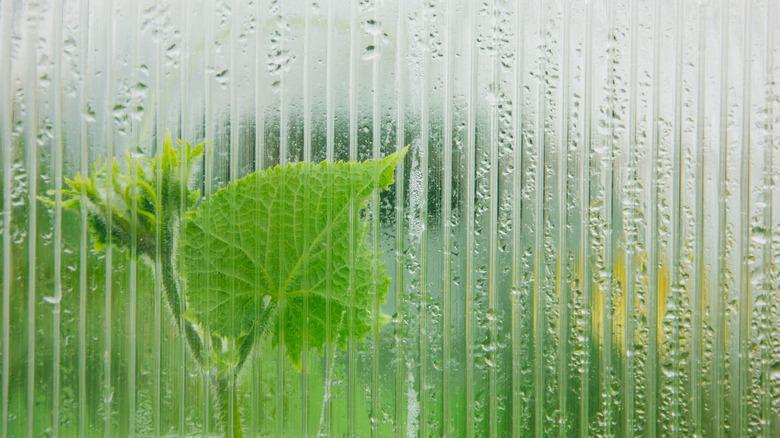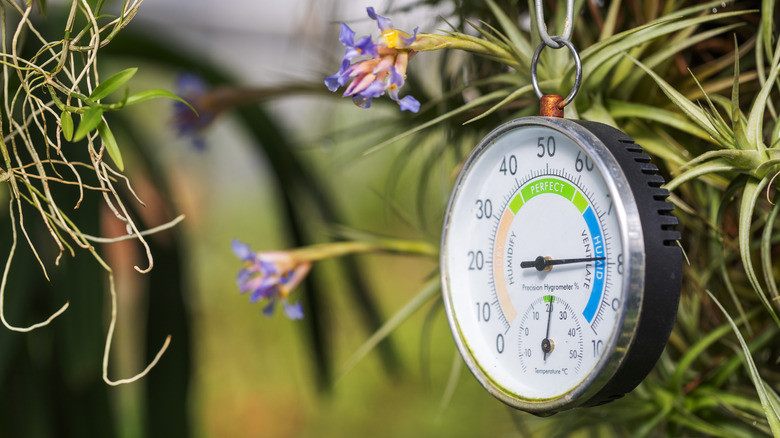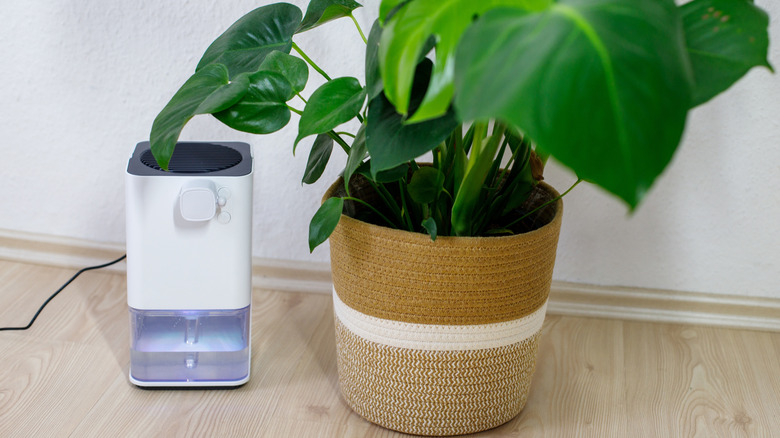Is A Dehumidifier The Answer To Healthy, Thriving Plants?
For the average houseplant aficionado, the importance of humidity in the growth process is a well-known fact. Many indoor plants have tropical origins, so you likely already understand the need to raise the humidity in your house so your favorite houseplants can thrive. But what if you're a next-level green thumb who's growing in a greenhouse? In that case, you'll need to handle the additional balancing act of dehumidifying your plants. Proper dehumidification is vital for their health since greenhouses and regular homes are completely different environments moisture-wise — the relative humidity of a greenhouse is 50% or higher, but that level of mugginess in a home would be uncomfortable at the best and could cause harmful bacteria and mold growth at the worst.
Without dehumidification in a greenhouse, condensation can start to form on plants and the roof of the greenhouse above them. This excess moisture can lead to fungal diseases like Botrytis cinerea, and to make matters worse, the drip of water from above can spread diseases by splashing the soil — and its pathogens — onto neighboring plants. However, overdoing it with a dehumidifier can accelerate transpiration in plants, which is a natural process of losing water. This can cause problems if it's occurring faster than plants can re-uptake water. The key is to use the right kind of dehumidifier at the right level.
How to control humidity in a greenhouse
Humidity can be complicated to control in a greenhouse. You need to consider factors like the size of your greenhouse and which plants you're growing, so be sure to choose the right-sized dehumidifier — one that's large enough to effectively remove moisture and compatible with your specific plants' humidity needs. There are multiple types of dehumidifiers, the main two being desiccant and refrigerant dehumidifiers. Desiccant dehumidifiers pull air in and carry it over a chemical substance inside the machine that absorbs water (called a desiccant, hence the name). They're your more portable and easy-to-install option, and they work well in smaller greenhouses in cooler environments.
Refrigerant dehumidifiers work similarly, but instead of using a desiccant, the air passes over a cold coil. This causes condensation, and once that humidity turns into water droplets, it's pulled out of the air. Refrigerant dehumidifiers can remove more moisture this way, so they're well-suited to for hotter and more humid climates. However, they're often bulkier than their desiccant counterparts, so if your greenhouse is small, space may be an issue.
While dehumidifiers get the job done, there are also ways to lower humidity without using a dehumidifier. The simplest and most common approach is ventilation, potentially with options like roof and sidewall vents. This is more finicky than using a machine with readable measurements and programmable settings, but it uses less energy, making it lower cost.
Do you need a dehumidifier for houseplants?
If you don't have a greenhouse, but you do have greenery around your house, you may be wondering: is it a good idea to get a dehumidifier for houseplants? In short, for most plants, no. The general happy medium for houseplants' relative humidity is around 40 to 50%, but many even prefer the 70 to 80% range. Even without a dehumidifier, a home's humidity can regularly fall below 30%, especially during cooler times of year when your heat is on — add in a dehumidifier, and you may be depriving your plant of the moisture it needs to thrive.
That said, there are still some plants that will thrive in your low-humidity home. Cacti and succulents are the obvious choices, but you can also consider growing philodendrons, money plants, cast iron plants, or Chinese evergreen. Overall, a dehumidifier may be the key to thriving plants in a greenhouse, but think twice before using one in your home, and make sure whatever you use for your greenhouse is properly suited to your plants and local climate.


